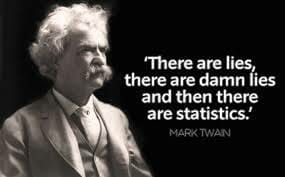Dear nonprofit, 
Thanks for the amazing work you do. I mean it. And you know I mean it–because I sent you a donation. But maybe I made a mistake.
I’ve been giving to you for years, always at the same time of year. You send me a thank-you note whenever you get around to it…if at all. Sometimes the thank-you note arrives after the next time you ask for money. (Tacky, my friends, tacky.)
Between my gifts, you send me newsletters that do nothing but pat yourself on the back. I don’t want to know how great you are, even if you can prove it with statistics. I want to know what difference it makes to the cause I care about when I give. You’re not telling me that.
You asked me to follow you on Facebook. I did. But all I see there is the exact same articles you included in your newsletter, in the exact same format. I know that’s easier for you, but it does nothing for me.
Let me tell you a secret: I have a little list.
It’s the list of organizations I give to every year. You’re on that list because of the work you do–but there are other groups that do equally good work. I can’t give to all of them, and with the way you treat me, I wonder if I should drop you and add one of them to the list instead.
Now, here’s another secret: you could get me to keep you on the list and maybe even give to you more than once a year. But you’d have to change your ways. How?
Thank me early and often. Write personally to me and tell me a story I haven’t heard yet that will convince me I gave to the right group.
Write newsletters I’ll want to read. If it’s only in there to make the Executive Director look good or the Board feel good, leave it out! Help me understand the real-world problems that my donation empowered you to solve.
Be social on social media. Don’t just post: ask questions and invite me to answer them. Reply to my answers. Comment on my posts. Let’s have a conversation, and it’s on you to inform me, entertain me, and make me glad I talked with you.
That sounds like a lot of work? Well, I’m worth it. I and all the other donors who feel the same way. We’re on your list…but make your communications as impressive as the program work you do if you want to stay on our list this year.
Sincerely,
Dennis
Share this:
- Click to share on Facebook (Opens in new window) Facebook
- Click to share on X (Opens in new window) X
- Click to email a link to a friend (Opens in new window) Email
- Click to share on Pocket (Opens in new window) Pocket
- Click to share on WhatsApp (Opens in new window) WhatsApp
- Click to share on Pinterest (Opens in new window) Pinterest
- Click to share on LinkedIn (Opens in new window) LinkedIn
- Click to print (Opens in new window) Print


